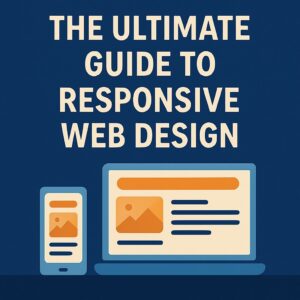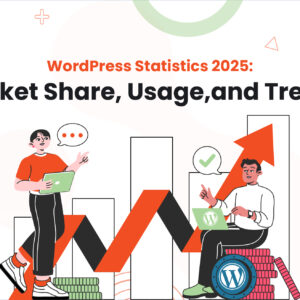Businesses are quickly using AI-powered chatbots to improve customer interaction, expedite processes, and expand their support capabilities in today’s fast-paced digital economy. Even if demand is rising, choosing the proper development partner is crucial to success.
Before diving into the common pitfalls businesses must avoid, let’s first understand what AI chatbot development services truly encompass.
What Are AI Chatbot Development Services?
AI chatbot development services are specialized offers for designing, creating, deploying, and maintaining intelligent virtual assistants that are offered by software development organizations or technology firms. These chatbots can engage with consumers in a conversational, human-like way because they are driven by artificial intelligence, which includes machine learning (ML), natural language processing (NLP), and contextual awareness.
These services may include:
- Strategy consulting for chatbot use cases
- Custom chatbot design and UI/UX development
- Integration with CRMs, ERPs, and third-party APIs
- Multilingual and omnichannel support
- Ongoing chatbot training, maintenance, and analytics
Delays in digital transformation, bad customer experiences, and resource waste can result from selecting the incorrect service provider. Here are five important pitfalls to avoid when choosing AI chatbot development services to help you make an informed choice.
1. Overlooking Business-Specific Use Cases
The Mistake:
Many companies get right into chatbot creation without having a defined plan or choosing a supplier who knows their market and target audience. Rarely does a general solution provide long-term benefits.
How to Avoid It:
Select a development partner who can provide you with AI chatbot solutions that are specific to your business plan. No matter whether you require a chatbot for lead generation, customer service, scheduling appointments, or eCommerce support, your provider should match the chatbot’s functionalities with your goals. Request prior case studies or domain knowledge related to your area of expertise.
2. Prioritizing Cost Over Quality
The Mistake:
Choosing a less expensive service provider could seem like a cost-effective move, but in practice, this frequently leads to poor performance, limited scalability, and frequent malfunctions.
How to Avoid It:
Prioritize value over price. Examine the provider’s post-launch support, AI skills, technical know-how, and customer feedback. Although a well-designed chatbot may be more expensive at first, it will save a lot of money over time by decreasing manual labor, raising customer satisfaction, and increasing operational effectiveness.
3. Ignoring Integration Capabilities
The Mistake:
Many businesses deploy chatbots that cannot integrate with their existing tools—such as CRM systems, payment gateways, helpdesk software, or eCommerce platforms—limiting their effectiveness.
How to Avoid It:
Make sure the individual who is developing your chatbot can easily integrate it with the technologies your team currently utilizes. Salesforce, HubSpot, Shopify, Zendesk, and Slack are a few examples of these systems. Integration enables your bot to efficiently automate business operations, personalize interactions, and obtain and update data in real-time.
4. Choosing a One-Size-Fits-All Chatbot
The Mistake:
Some providers offer prebuilt chatbot templates that may appear convenient but often lack flexibility, depth, and adaptability. These bots struggle to handle unique workflows or scale with business growth.
How to Avoid It:
Choose a supplier that provides scalable and adaptable chatbot solutions. Future improvements, tone of voice, branding, and customized conversation flows should all be supported by the bot. It should also be constructed on a scalable backend that can manage growing traffic and increasingly difficult jobs as your company expands.
5. Ignoring Post-Deployment Support and Optimization
The Mistake:
AI chatbots are not a “set it and forget it” solution. Some businesses fail to consider the importance of ongoing updates, monitoring, and training—and end up with bots that become outdated or ineffective over time.
How to Avoid It:
Select a service provider that provides all-inclusive post-launch assistance, such as chatbot retraining, analytics, performance tracking, and user feedback gathering. To maintain your chatbot’s alignment with changing user expectations and company objectives, look for assistance that is backed by SLAs and conducts regular performance reviews.
Conclusion
AI chatbots are rapidly transforming how businesses engage with customers — but building an effective chatbot comes with its fair share of challenges. From accurately interpreting natural language and managing diverse user intents to maintaining context across conversations and ensuring smooth integration with existing systems, developers face multiple hurdles throughout the chatbot development journey. This blog dives deep into the 5 most pressing challenges in AI chatbot development and provides actionable strategies to overcome them. Whether you’re creating a simple support bot or a sophisticated AI assistant, understanding these obstacles — and knowing how to solve them — is critical to delivering seamless, human-like interactions that enhance user satisfaction and drive business success.
Developing a high-performing AI chatbot goes beyond just coding — it involves solving real-world challenges like understanding natural language, maintaining conversational context, handling user intent accurately, and integrating with existing systems. In this blog, we explore the 5 most common challenges developers and businesses face during AI chatbot development and offer practical strategies to overcome each one. Whether you’re building a simple assistant or a complex conversational bot, this guide will help you avoid pitfalls and create a chatbot that truly enhances user experience.









